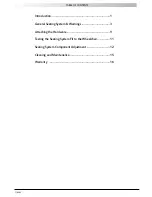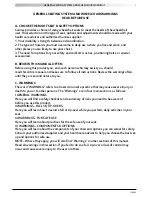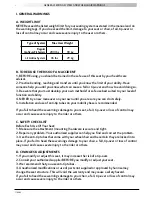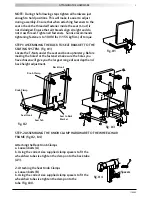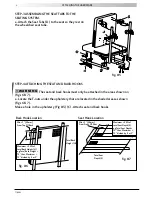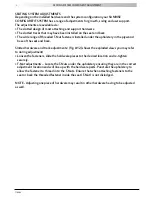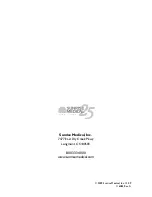
7
116083
GENERAL SEATING SYSTEM AND WHEELCHAIR WARNINGS
III. WARNINGS: FOR SAFE USE
A. MAINTENANCE
1. Inspect and maintain this seat regularly.
2. If you detect a problem, make sure to service or repair the chair before use.
3. At least once a year, have a complete inspection, safety check and service of your
chair made by an authorized supplier.
4 BELTS, WEBBING, STRAPS AND UPHOLSTERED POSITIONING COMPONENTS:
Check all components regularly and replace at the first signs of any tears, rips or fraying. Keep
foreign objects from entering the receiver parts of locking buckles and insure they positively
latch at each use.
If you fail to heed these warnings damage to your chair, a fall, tip-over or loss of
control may occur and cause severe injury to the rider or others. For additional
maintenance information see Maintenance Section.
IV. WARNINGS: COMPONENTS & OPTIONS
A. FASTENERS
Many of the screws, bolts and nuts on this chair are special high-strength fasteners.
Use of improper fasteners may cause your chair to fail.
1. ONLY use fasteners provided by an authorized supplier (or ones of the same type and
strength, as indicated by the markings on the heads).
2. Over- or under-tightened fasteners may fail or cause damage to chair parts.
3. If bolts or screws become loose, tighten them as soon as you can.
4.Sunrise recommends that all fasteners be checked for wear, such as loose bolts or broken
components every 3 months. Loose fasteners should be retightened according to the
installation instructions. All fasteners should be tightened to torque specifications as stated
in the hardware installation instructions. Contact your authorized Sunrise Medical supplier
immediately to replace any broken or malfunctioning components.
DO NOT CONTINUE TO USE THE SYSTEM AFTER IDENTIFYING LOOSE OR BROKEN
COMPONENTS.
If you fail to heed these warnings damage to your chair, a fall, tip-over or loss of control may
occur and cause severe injury to the rider or others.
B. POSITIONING BELTS (OPTIONAL)
Use positioning belts ONLY to help support the user’s posture. Improper use of
these belts may cause severe injury to or death.
1. Make sure the rider can not slide down in the wheelchair seat. If this occurs, the user
may suffer chest compression or suffocate due to pressure from the belts.
2. The belts must be snug, but must not be so tight that they interfere with breathing.
You should be able to slide your open hand, flat, between the belt and the rider.
3. A pelvic ledge or a similar can help keep the user from sliding down in the




